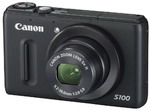Monday, May 9, 2005
Sony Hi-MD Technology - Should It Be On Your To-Buy List?
Posted by Philip Colmer in "THOUGHT" @ 09:00 AM
Before I look at what has changed between the original MiniDisc recorders and the new Hi-MD models, let's start with a short look at the history of the format.
Sony designed and developed MiniDisc in 1986 and launched it in 1992, with Digital Compact Cassette (DCC) as the main competitor - both vying as the replacement for the audio cassette. DCC had the advantage of being "backwards compatible" with the audio cassette, but that also led to disadvantages like no instant track access, and spools & tapes that break over time.
MiniDisc had the technological advantage, but also had to compete with CD-R, CD-RW, MP3 players and DVD Audio. The net result was that neither format really won. DCC was eventually dropped, but Sony have continued to market MiniDisc, partly because it has been extremely successful in Japan.
After twelve years of refining the MiniDisc range - making the units smaller, enhancing the portability and reducing the price - Sony released the Hi-MD range in 2004.
The Media
The first obvious difference between the MD and Hi-MD range is the media. The physical size of the disc hasn't changed, but the capacity has increased to 1GB on the new Hi-MD media, allowing 34 hours of music to be recorded using the "Hi-LP" ATRAC3plus format at 64kbps. Sony state that you can store up to 45 hours, but to get to that figure, you need to reduce the bitrate to 48kbps. As you can see from Figure 1, the new players continue to be just slightly larger than the physical media - a triumph of miniature electronics.

Figure 1: Hi-MD media next to the MZ-NH1.
Over time, the ATRAC encoding technology has been refined. The original ATRAC format recorded at 292kbps and it's this compression ratio that defines the labelling on the old MD discs as 60, 74 and 80 minutes, depending on the capacity of the discs. By comparison, the new ATRAC3plus format at 256kbps will get you 105, 130 and 140 minutes respectively. With the improvements made to ATRAC, though, you can decrease the bitrate comfortably to 64kbps, resulting in much higher capacities but no noticable drop in quality.
Sony have been very clever in supporting the older media on the new Hi-MD Walkmans - the devices support the discs completely for reading and writing, thus allowing you to "create" a MiniDisc on a new device and play it on an old device. They haven't stopped there, though. You can, if desired, instruct the Hi-MD device to use the older media in Hi-MD mode. This allows you to gain all of the new capabilities of the Hi-MD media but with smaller capacity and lower outlay. New Hi-MD media, though, can only be used in Hi-MD mode and cannot be used on older devices.
The New Features
So what does Hi-MD mode give you?
- ATRAC3plus audio compression technology - roughly twice the compression over ATRAC3 at similar bit rates.
- Linear PCM - devices can record at full audio quality without any compression (16 bits, 44.1KHz, i.e. full CD quality).
- Bi-directional audio transfers between the computer and the Walkman.
- Ability to store computer files.
Support for linear PCM means that Hi-MD Walkmans can be used to create full fidelity recordings. A 1GB disc will contain 94 minutes of recording. You can then move the recording back onto the computer, retaining that fidelity. Previous MD Walkmans would let you record onto the disc using the line in or mic inputs but it was stored in ATRAC format and there was no digital transfer back to the computer - the only way of extracting the audio was to "record" it on the computer by connecting the headphone socket to a recording input on the PC.
Transferring digital recordings from the Hi-MD Walkman onto the computer is a great step forwards. For some reason, though, Sony limited the functionality of this feature - not to the point where it can't be used, but you do have to jump through some hoops to get to the final destination! To begin with, the only way to get the audio file off the player and onto your computer is to use the supplied SonicStage software - more on this later. Next, as a result of transferring the file onto the computer, the original on the MiniDisc is marked as being associated with your computer, so you can't transfer it from the MiniDisc to any other computer.
There is a solution, though, and Sony have provided it - they make available a free download that will convert the oma file that has been created on your computer into a wav file, preserving the quality and losing the DRM information. The caveat to this, though, is that the audio recording must have been made using an analogue input, i.e. the line in or mic inputs. If the optical input is used, you can still transfer the recording to the PC, but you cannot convert it into a WAV file, nor can you burn it onto an audio CD. That limitation makes sense because, without it, you could use the device to copy digital recordings without any copyright restrictions.
The last new feature is another big leap forward and helps to put the Hi-MD range back in the running against devices like the iPod and some MP3 players. When the Hi-MD device is connected to the PC via USB, the disc appears as a removable disc (just as it would with a memory key) without the need for any special drivers.
Users are always looking to get more out of their portable devices and the added bonus of being able to swap discs on the player means that you aren't constrained by the "built-in" capacity of the device as you are with the competition. The implementation used by Sony loses some capacity to system information, so the 1GB disc can store 964MB, the 80 minute disc 291MB, the 74 minute disc 270MB and the 60 minute disc 219MB. Amazon UK sells the 1GB disc for £4.99 or a 5-pack of the 80 minute discs for £5.98, which makes the price per MB very competitive with alternatives like memory keys, although the latter do have a slight portability advantage over the Minidisc. That said, if you've got quite a bit of data to transfer around, the ability to swap discs clearly puts the Minidisc units ahead of the game there.












